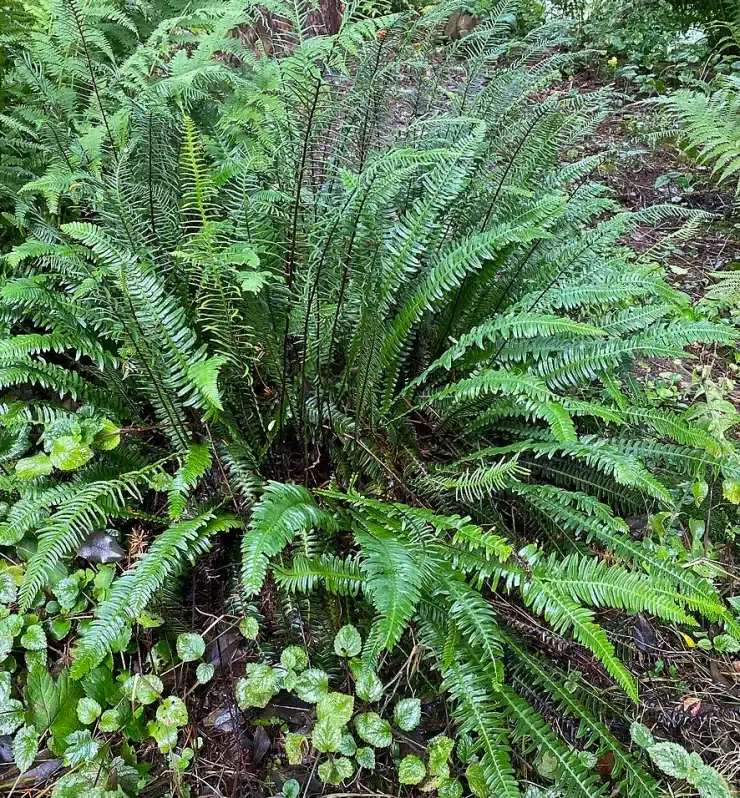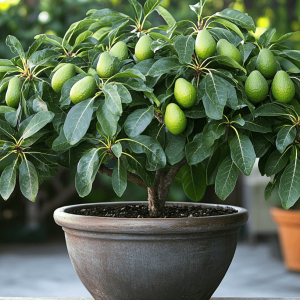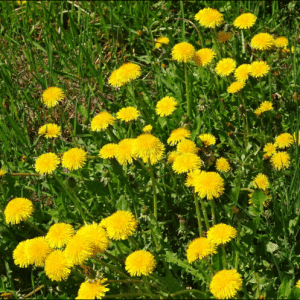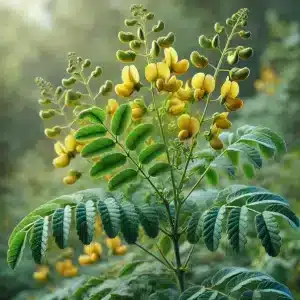
The Blechnaceae family of plants, primarily consisting of ferns, is a remarkable group with a long history of traditional use and ecological significance. Found in tropical, subtropical, and temperate regions around the world, these resilient plants have carved a niche for themselves not only as ornamental additions to gardens but also as powerful herbs offering a wide array of health benefits. Among their notable species are Blechnum indicum (Swamp Water Fern), Blechnum occidentale (Hard Fern), and Blechnum chilense (Chilean Blechnum).
Blechnaceae is a family of perennial ferns known for their unique pinnate leaves, robust root systems, and leathery fronds. These plants thrive in various habitats, from rainforests and wetlands to mountainous regions, making them highly adaptable.
While ferns are often associated with ornamental purposes, members of the Blechnaceae family have gained attention for their traditional medicinal uses and health-promoting properties. Their ability to combat inflammation, improve respiratory health, and support the digestive system makes them a valuable herb for natural remedies.
Incredible Benefits of Blechnaceae Plants
1. Anti-Inflammatory Properties
Blechnaceae plants are rich in bioactive compounds like flavonoids and phenolic acids, which have been shown to reduce inflammation. This makes them effective for:
- Alleviating joint pain and arthritis symptoms.
- Reducing swelling from injuries or infections.
2. Respiratory Health
The leaves and rhizomes of certain Blechnaceae species are used to prepare herbal infusions that help soothe respiratory ailments such as:
- Coughs and colds.
- Bronchitis and mild asthma.
The plant’s natural compounds act as expectorants, helping to clear mucus and ease breathing.
3. Digestive Support
Blechnaceae plants have traditionally been used to treat stomach disorders. Their astringent and anti-inflammatory properties aid in:
- Relieving diarrhea and indigestion.
- Calming an upset stomach.
4. Wound Healing
The sap and crushed fronds of Blechnaceae ferns have antiseptic properties that promote wound healing. Applying the plant directly to cuts, insect bites, or rashes can:
- Reduce the risk of infections.
- Speed up tissue repair and recovery.
5. Antioxidant Power
Blechnaceae plants are rich in antioxidants that combat oxidative stress. Regular consumption of herbal teas made from these plants may:
- Protect cells from damage caused by free radicals.
- Reduce the risk of chronic diseases like heart disease and cancer.
6. Detoxification and Diuretic Effects
Decoctions made from Blechnaceae rhizomes have diuretic properties, which:
- Help flush toxins from the kidneys.
- Support urinary health.
Ecological Benefits of Blechnaceae Plants
In addition to their medicinal properties, Blechnaceae plants play a crucial role in maintaining ecological balance:
- Soil Stabilization:
- Their extensive root systems prevent soil erosion and help stabilize riverbanks and hillsides.
- Habitat Creation:
- Ferns provide shelter for insects, birds, and other small animals, contributing to local biodiversity.
- Air Purification:
- Like many ferns, Blechnaceae plants are natural air purifiers, removing pollutants and improving air quality.
How to Use Blechnaceae Plants
If you’re looking to incorporate Blechnaceae plants into your natural remedy repertoire, here are some ways to use them:
1. Herbal Infusions
- Boil the leaves or rhizomes to create a soothing tea that supports respiratory and digestive health.
- Drink the tea warm to relieve coughs or stomach issues.
2. Topical Application
- Crush fresh fronds into a paste and apply directly to wounds, insect bites, or irritated skin.
- Mix the paste with coconut oil for added soothing effects.
3. Decoctions
- Prepare a decoction by simmering the rhizomes in water for 20–30 minutes. This can be used as a diuretic or a remedy for fever.
Precautions and Safety Tips
While Blechnaceae plants offer incredible benefits, they should be used with care:
- Proper Identification: Not all species in the Blechnaceae family are safe for consumption. Always consult an expert to identify the plant correctly.
- Dosage: Overuse can lead to adverse effects. Use herbal remedies in moderation and under guidance.
- Allergies: Perform a patch test before applying plant extracts topically to avoid allergic reactions.
- Pregnancy and Nursing: Consult a healthcare provider before using these plants if you are pregnant or breastfeeding.
Cultivating Blechnaceae Plants
Blechnaceae plants are easy to grow and care for, making them a perfect addition to your garden. Here’s how to cultivate them:
- Soil: Use well-draining, slightly acidic soil.
- Light: Provide partial to full shade, mimicking their natural forest habitat.
- Watering: Keep the soil consistently moist but not waterlogged.
- Temperature: These plants thrive in mild to warm climates.
Not only do they serve as functional herbs, but their lush, green foliage adds aesthetic appeal to any garden.
The Blechnaceae plant is much more than just a beautiful fern. Its powerful medicinal properties make it a natural remedy for inflammation, respiratory issues, digestive problems, and more. Additionally, its ecological benefits highlight its importance in preserving biodiversity and stabilizing the environment. Whether you’re using it as an herbal remedy, an ornamental plant, or a tool for soil conservation, Blechnaceae is a versatile and valuable plant family worth exploring.
Jatropha gossypifolia, commonly known as bellyache bush, cotton-leaf physic nut, or wild physic nut, is a perennial shrub that belongs to the Euphorbiaceae family. Native to tropical regions of the Americas, this plant…
Fig sap, the milky fluid extracted from the stems and leaves of the fig tree (Ficus carica), has been used for centuries in traditional medicine and skincare. While the fruit of the fig tree gets most of the attention…
Chillies are celebrated worldwide for their fiery flavor, vibrant color, and culinary versatility. From spicing up curries to adding a kick to sauces, these small yet powerful fruits hold a special place in kitchens…






